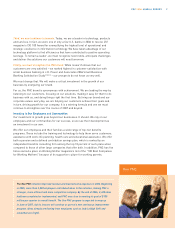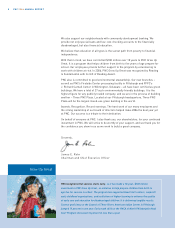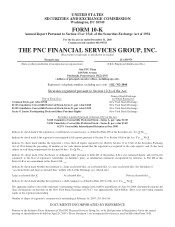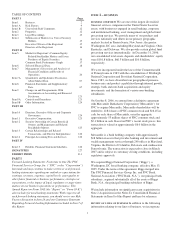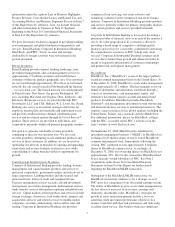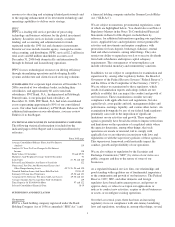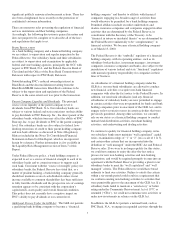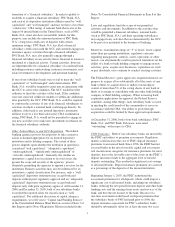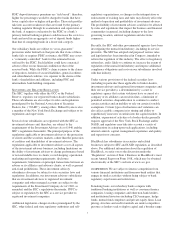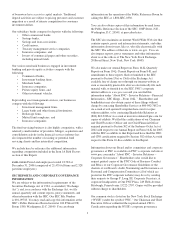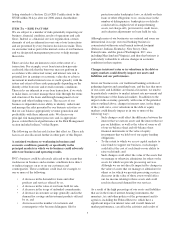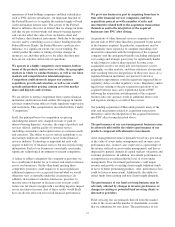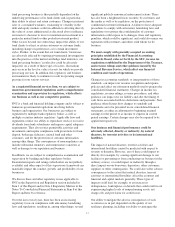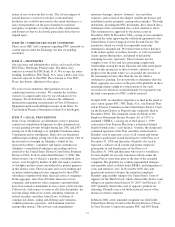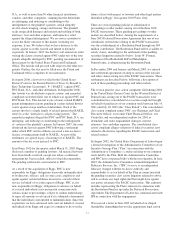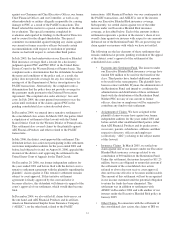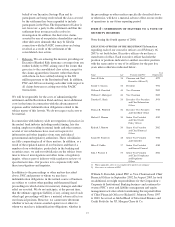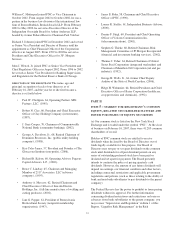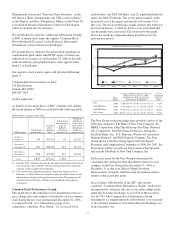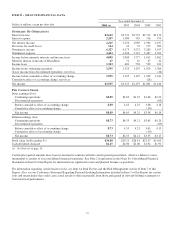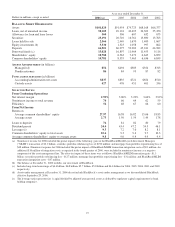PNC Bank 2006 Annual Report Download - page 19
Download and view the complete annual report
Please find page 19 of the 2006 PNC Bank annual report below. You can navigate through the pages in the report by either clicking on the pages listed below, or by using the keyword search tool below to find specific information within the annual report.listing standards (a Section 12(a) CEO Certification) to the
NYSE within 30 days after our 2006 annual shareholders
meeting.
ITEM
1
A
–
RISK FACTORS
We are subject to a number of risks potentially impacting our
business, financial condition, results of operations and cash
flows. Indeed, as a financial services organization, certain
elements of risk are inherent in every one of our transactions
and are presented by every business decision we make. Thus,
we encounter risk as part of the normal course of our business,
and we design risk management processes to help manage
these risks.
There are risks that are known to exist at the outset of a
transaction. For example, every loan transaction presents
credit risk (the risk that the borrower may not perform in
accordance with contractual terms) and interest rate risk (a
potential loss in earnings or economic value due to adverse
movement in market interest rates or credit spreads), with the
nature and extent of these risks principally depending on the
identity of the borrower and overall economic conditions.
These risks are inherent in every loan transaction; if we wish
to make loans, we must manage these risks through the terms
and structure of the loans and through management of our
deposits and other funding sources. The success of our
business is dependent on our ability to identify, understand
and manage the risks presented by our business activities so
that we can balance appropriately revenue generation and
profitability with these inherent risks. We discuss our
principal risk management processes and, in appropriate
places, related historical performance in the Risk Management
section included in Item 7 of this Report.
The following are the key risk factors that affect us. These risk
factors are also discussed further in other parts of this Report.
A sustained weakness or weakening in business and
economic conditions generally or specifically in the
principal markets in which we do business could adversely
affect our business and operating results.
PNC’s business could be adversely affected to the extent that
weaknesses in business and economic conditions have direct
or indirect impacts on us or on our customers and
counterparties. These conditions could lead, for example, to
one or more of the following:
• A decrease in the demand for loans and other
products and services offered by us,
• A decrease in the value of our loans held for sale,
• A decrease in the usage of unfunded commitments,
• A decrease in customer savings generally and in the
demand for savings and investment products offered
by us, and
• An increase in the number of customers and
counterparties who become delinquent, file for
protection under bankruptcy laws, or default on their
loans or other obligations to us. An increase in the
number of delinquencies, bankruptcies or defaults
could result in a higher level of nonperforming
assets, net charge-offs, provision for credit losses,
and valuation adjustments on loans held for sale.
Although many of our businesses are national and some are
international in scope, our retail banking business is
concentrated within our retail branch network footprint
(Delaware, Indiana, Kentucky, New Jersey, Ohio,
Pennsylvania, and the greater Washington, D.C. area,
including Maryland and Virginia), and thus that business is
particularly vulnerable to adverse changes in economic
conditions in these regions.
Changes in interest rates or in valuations in the debt or
equity markets could directly impact our assets and
liabilities and our performance.
Given our business mix, our traditional banking activities of
gathering deposits and extending loans, and the fact that most
of our assets and liabilities are financial in nature, we tend to
be particularly sensitive to market interest rate movement and
the performance of the financial markets. In addition to the
impact on the economy generally, with some of the potential
effects outlined above, changes in interest rates, in the shape
of the yield curve, or in valuations in the debt or equity
markets could directly impact us in one or more of the
following ways:
• Such changes could affect the difference between the
interest that we earn on assets and the interest that we
pay on liabilities, as well as the value of some or all
of our on-balance sheet and off-balance sheet
financial instruments or the value of equity
investments that we hold or of our equity funding
obligations;
• To the extent to which we access capital markets to
raise funds to support our business, such changes
could affect the cost of such funds or our ability to
raise such funds; and
• Such changes could affect the value of the assets that
we manage or otherwise administer for others or the
assets for which we provide processing services.
Although we are not directly impacted by changes in
the value of assets that we manage or administer for
others or for which we provide processing services,
decreases in the value of those assets would affect
our fee income relating to those assets and could
result in decreased demand for our services.
As a result of the high percentage of our assets and liabilities
that are in the form of interest-bearing instruments, the
monetary, tax and other policies of the government and its
agencies, including the Federal Reserve, which have a
significant impact on interest rates and overall financial
market performance, can affect the activities and results of
9


